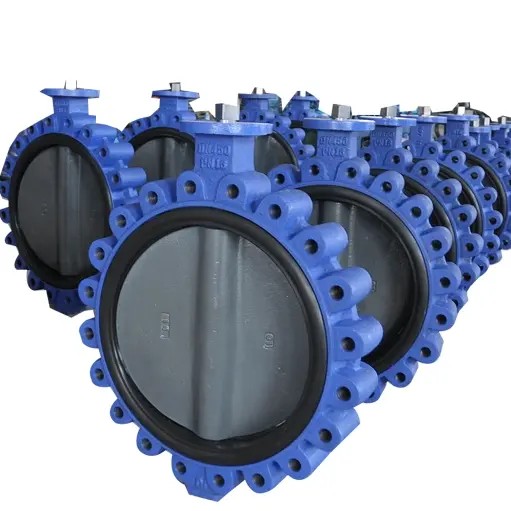


How To Choose a Butterfly Valve and What Are the Parts?
Selecting the Right Butterfly Control Valve: Key Considerations for Optimal Performance
Butterfly valves are widely used in industrial applications for their compact design, cost-effectiveness, and reliable flow control. However, choosing the correct valve for your system requires evaluating several critical factors to ensure compatibility and long-term performance.
Select the valve material based on the characteristics of the fluid and the environmental conditions:
Carbon Steel – Ideal for general-purpose industrial use with moderate temperatures and pressures.
Stainless Steel – Excellent for corrosive or sanitary applications, including food and pharmaceutical processes.
PVC / CPVC – Lightweight, corrosion-resistant options for low-pressure water and chemical systems.
Correct sizing is crucial to ensure efficient flow and avoid turbulence or cavitation. Consider:
Fluid type (viscosity, specific gravity)
Inlet and outlet pressures
Maximum flow capacity
Acceptable pressure drop across the valve
Resilient Seats (e.g., EPDM, NBR): Offer tight sealing, suitable for low to medium pressure and temperature applications.
Metal Seats: Recommended for high-temperature, high-pressure, and abrasive service conditions where durability is key.
Concentric Disk: Common for general-purpose use at low pressures.
Double Offset: Reduces wear on the seat, enhancing sealing and lifespan.
Triple Offset: Designed for zero-leakage performance in critical or high-pressure systems, such as steam and hydrocarbon processing.
Manual (lever or gear-operated): Cost-effective and simple to use for smaller valves and low-cycle applications.
Electric Actuators: Provide automation, ideal for remote control or integration into control systems.
Pneumatic Actuators: Fast-acting and suitable for high-cycle operations, often used in process industries.
Fast-acting actuators are essential for emergency shut-off or quick system isolation.
Slow-acting actuators provide smoother control, ideal for throttling and precision adjustments.
Gases: Require tight sealing to prevent leakage.
Liquids with solids or slurries: Need wear-resistant materials and anti-jamming disk designs to maintain reliability.
Core Components of a Butterfly Valve
(Refer to Figure 8 for component illustration.)
Valve Body: Connects to the pipeline and encases internal components.
Disk: Rotates within the flow path to regulate fluid passage, typically 90° from open to closed.
Stem: Connects the actuator or handle to the disk, often sealed with O-rings and bushings to prevent leakage.
Seat / Sealing Ring: Provides tight sealing between the disk and body, especially in concentric designs.
Operating Mechanism: Can be manual (lever/gear) or automated (electric/pneumatic), depending on the application.
Bushing / Bearing: Supports the stem, reduces friction, and enhances durability. Available in corrosion-resistant or self-lubricating materials.
Industry Applications of Butterfly Valves
HVAC Systems: Control air flow in duct systems, contributing to efficient climate control.
Chemical & Pharmaceutical: Provide precise flow control for safe, sterile operations.
Water Treatment & Distribution: Regulate flow of water and treatment chemicals in municipal and industrial systems.
Irrigation: Manage water distribution across agricultural fields.
Oil & Gas / Petrochemical: Handle crude oil, natural gas, and processing chemicals in refining and transport pipelines.
Conclusion
Choosing the right butterfly valve requires understanding the system requirements and matching them with the appropriate valve specifications. By evaluating factors such as material compatibility, seat and disk design, actuator type, and fluid characteristics, you can ensure efficient, safe, and reliable valve performance across a broad range of industrial applications.Know more about Google SEO Directory
